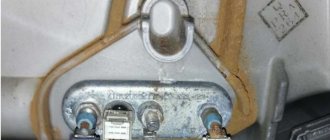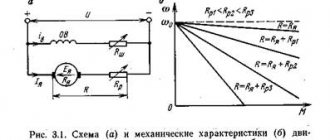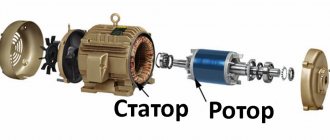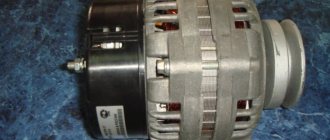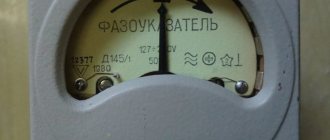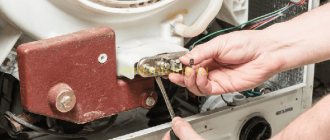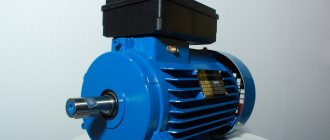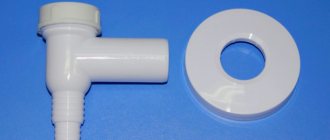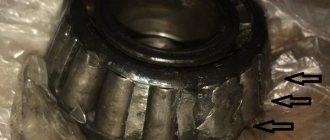Expert advice
To avoid repairing the tachogenerator of the washing machine, it is recommended to install a reliable element called a Hall sensor.
It is mounted on the engine of the device and is characterized by high performance. Many leading brands initially equip new generation washing machines with this device. Slow operation of the loading drum does not always indicate a breakdown of the tachogenerator of the Atlant washing machine. Before replacing this part, you need to check the functionality of the buttons. A simple sticking of the spin start button can lead to a decrease in drum speed at the washing and spinning stage.
LG F-10B8ND
In addition to problems with the tachogenerator, overloading the drum can cause a slowdown in speed. Housewives often do not comply with the parameters recommended by the manufacturer for using the washing machine. If you load more laundry into the drum than is provided for by the design features of the unit, this will lead to improper operation of the equipment at all stages.
Principle of operation
UBL of a washing machine is a hatch blocking device, which is an integral part of an automatic washing machine. Its main purpose is to lock the device door and ensure safe operation of the device. If the element is broken and does not work, the automatic control system of the machine will not start the washing process.
In order to understand the principle of operation of this device, you need to pay attention to how it is designed. The design of the mechanism consists of the following elements:
- retainer;
- thermocouple;
- bimetallic plate.
The hatch lock is located inside the plastic housing. The blocking system and the lock are connected by a metal spring, which is located in the lower part of the hatch. When a command is received from the control module to start washing, the hatch blocking device receives a certain discharge of electric current to the thermoelement. The heated thermoelement transfers thermal energy to the bimetallic plate, which, increasing, presses on the latch. If a breakdown occurs in this operating circuit, the hatch will not be locked and the machine will not start working.
The most common electric motor
Of the types of motors found, the most common is the commutator. More precisely, the motor is called a brush-commutator unit and consists of a movable rotor, a static stator, electric brushes and lamellas. The system operates due to a sequential reaction on the winding when an electric current is supplied. In short, the commutator motor works as follows:
- electric current is supplied to the graphite brushes adjacent to the lamellas;
- a magnetic field is created;
- through the lamellas, the voltage from the brushes is transmitted to the rotor and stator;
- the rotor begins to rotate, gradually picking up the speed specified by the program;
- the impulse is transmitted to the shaft;
- The washing drum spins up.
The collector is located in the lower part of the housing under the washing tub. To transmit the accumulated speed from the engine to the drum shaft, a drive is provided - pulleys and a drive belt. As soon as the motor accelerates, the “wheels” spin due to the rubber band, transferring the impulse to the drum.
The commutator motor is durable, accessible and inexpensive to repair.
A standard commutator motor has a number of advantages:
- simple and reliable mechanism, which makes the engine durable;
- affordable price, which reduces the cost of the machine;
- inexpensive and easy maintenance and repair.
The collector also has disadvantages. The main one is the high noise level due to the presence of brushes, which are constantly rubbed against the metal body of the motor. This leads to the second “minus”: graphite tips wear out over time and need to be replaced.
Testing the engine
When you decide to test the engine yourself, you need to carefully study the design of the motor. Washing machines from Indesit are equipped with a collector-type motor, which is distinguished by its compactness and high power. An integral part of the device is the drive belt, which connects to the drum pulley and starts the rotation process.
As for the internal mechanism, several separate parts are hidden under the body: a rotor, a stator and two electric brushes. The tachometer located on top controls the speed in revolutions. Experts use several methods to check engine performance. But first you need to get it out of the washing machine.
- Remove the back panel of the washing machine by unscrewing the bolts around the perimeter.
- Loosen and remove the drive belt while rotating the pulley.
- Disconnect the water supply connected to the engine.
- We unscrew the holding bolts and, rocking the engine to the sides, pull it out.
What kind of motor is in the washing machine?
The electric motor of the washing machine rotates its central part - the drum. The first engines to go into mass production were belt-driven engines, driving the drum by means of a belt drive. This technology is still used today, but this has not stopped the evolution of washing machines.
Today, manufacturers have begun to use other types of motors. In total, today there are three main types of ED:
Each of them has its own pros and cons that should be taken into account when choosing a washing machine.
The device of washing machines
Few owners of a washing machine think about its design and operating principles. However, in order to independently repair a faulty automatic washing machine at home, you need to know its internal structure and the purpose of the main components and parts.
Control
The main part in a modern washing machine is the control module. It is with the help of the control board, which is a metal substrate with many resistors, diodes and other elements, that all washing processes take place: starting and stopping the machine, heating and draining water, spinning and drying clothes.
The module receives information from special sensors about how to act at a given time. The machine uses three sensors:
- pressure switch - shows the water level in the tank;
- thermostat - determines the water temperature;
- tachometer - controls the number of engine revolutions.
The control module is not only the most important, but also the most expensive part of the washing device. If it fails, the machine begins to act strange or completely refuse to do its job. Without special skills in repairing electronic equipment, you should not repair the board yourself. Most often, this part is completely changed or sent to professionals for repair.
Execution devices
Having received the appropriate washing instructions from the owner of the machine (mode, water temperature, the need for additional rinsing, etc.), and having checked the condition of the sensors, the control module gives the necessary orders to the executing mechanisms.
- Using a special UBL device, the loading hatch door is blocked. The machine will remain in this state until the end of the wash, and only 2-3 minutes after draining the water, the control module will signal to unlock the hatch.
- Water is supplied through the valve into the tank of the device. As soon as the pressure switch shows that the tank is full, the water supply will automatically stop.
- A tubular electric heater (TEH) is responsible for heating the water. From the module it receives a signal about the turn-on time and the temperature to which it is necessary to heat the water in the tank.
- The machine’s engine, which is connected through a belt or directly to the drum pulley, is responsible for rotating the drum. The moment of starting and stopping, as well as the rotation speed, is controlled by the control module.
- Waste water is drained using a pump. The drain pump pumps water out of the drum and sends it into the sewer pipe.
Such seemingly simple mechanisms, controlled by an electronic module, perform all the work of the washing unit.
Washing machine tank
The tank is a sealed plastic container that occupies most of the body of the washing machine. Inside the tank there is a drum for loading laundry and a heating element.
The washing machine tub consists of two parts connected by metal brackets or bolts. Water is taken in and drained through special pipes connected to the walls of the tank. To reduce the vibration that occurs when the drum rotates, the upper part of the tank is attached to the machine body with springs, and the lower part with shock absorbers.
The drum is made of high quality stainless metal. By rotating in it, the laundry is washed and wrung out, completely free of dirt. A rubber cuff located between the tank and the drum ensures the tightness of the structure.
What motors are used in a washing machine?
Let's look at each type of engine separately, assessing their strengths and weaknesses so that you can make an informed choice when selecting equipment.
Asynchronous
Washing machines use both two-phase and three-phase motors. But since the 2000s, the first type has gone into oblivion, and today more compact 3-phase motors with the ability to regulate the speed are used.
They are designed in this way: their design includes two parts - a stator (immovable) and a rotor (providing rotation of the drum). Such a motor can rotate up to 2.8 thousand revolutions in 1 minute.
Weakness of the asynchronous type engine: weakening of the torque, which causes the drum to sway and lose power during rotation. But if your washing machine has an asynchronous type motor, then the following advantages await you:
Experts cite the following disadvantages:
In powerful SMAs of recent years, such motors are no longer used. They can only be found in simple models from a low price category.
Collector
8 out of 10 household appliances include just such ED in their design. In washing machines, commutator motors began to be used in the early 90s, and already a decade later they almost completely replaced asynchronous two-phase analogues. Their main advantage is their versatility and operation from direct and alternating current.
Checking the functionality of the mechanism
There are machines on sale only with inverter and commutator motors, so we will consider these two varieties, leaving out the asynchronous one.
We are looking for a breakdown of the direct drive motor
The inverter is not intended for home repair. The best option is to try system testing, if your machine model is capable of this.
Self-diagnosis will display a fault code, its decoding and will help you understand where the problem is and whether the services of a specialist are needed.
The testing method and error codes are different for each machine. Before testing, you need to empty the drum of laundry and close the hatch tightly
If you still want to remove the inverter, follow the correct algorithm:
- Disconnect the device from the power supply. It is recommended to wait a few minutes until all elements are completely de-energized.
- Unscrew the bolts and remove the back panel.
- We find the screws under the rotor that secure the wiring and unscrew them.
- Before disconnecting the wires, we take photographs or sketch them, so that later we can correctly connect all power sources.
- Remove the central bolt that holds the rotor. During the process, you need to hold the rotor to prevent rotation.
- We remove the rotor assembly, and behind it the stator.
- Disconnect all wire connectors.
Now you can inspect the engine. It is unlikely that it will be possible to thoroughly test the operation of the inverter. What can be done? Check the integrity of the rotor winding.
The Hall sensor often breaks down in such engines. Whether it is operational can only be determined in a workshop if the part is replaced with a new one.
We carry out diagnostics of the belt drive
To check the collector, you must first remove it from the housing. To do this, remove the back panel, disconnect the wires and unscrew the bolts. It is permissible to pry with a screwdriver in the places where the bolts are attached, where dirt often accumulates and sticking occurs.
Now let's start diagnostics. We connect the wires of the stator and rotor windings according to the diagram. We connect it all to electricity. There is nothing wrong with the device if the rotor starts rotating.
This testing method has its own characteristics: it is impossible to test the operation of the engine in different modes, plus there is a risk of a short circuit from direct connection
To avoid a short circuit, you can connect a ballast in the form of a heating element to this circuit. We connect the ballast from the rotor side. It will begin to heat up, thereby protecting the engine from combustion.
The collector is a structure of several parts and they all require inspection. First in line are the notorious brushes. They are located on the sides of the body. We take them out and inspect them.
If they are worn out, they need to be replaced. A clear sign of such a need is that the engine sparks when rotating. To buy new brushes, take your old ones with you and write down information about the model of the washer.
The next element is the slats. They serve as current transmitter conductors to the rotor. These parts are glued to the shaft and if the motor jams, their detachment is possible.
If you have access to a lathe, it can be used to remove minor flaking. Don't forget to clean off the shavings with fine sandpaper.
Pay close attention to burrs and peelings on the lamellas; they are often the cause of unsatisfactory operation of the washing machine motor.
Now let's move on to the stator and rotor windings. If a short circuit occurs in them, the collector heats up, which causes the thermistor to operate. The result is that power is lost or the mechanism stops working altogether. We test the windings with a multimeter in resistance mode.
The stator is checked in buzzer mode. The ends of the wiring are tested one by one with probes. If there is no signal, the part is fine. You can determine the location of the short circuit by connecting one probe to the wiring and the second to the housing.
The probes are applied to the engine lamella. The display shows less than 20 Ohms - we have a short circuit, more than 200 Ohms - a break in the windings
If the device is silent, this is normal. If a breakdown is detected, you will need to create a new winding to repair it yourself, and this is difficult for a non-specialist.
If you still need to replace the engine, it is usually enough to simply install a new part in place of the old one. After all the manipulations, do not forget to turn on the machine and check its operation.
How to check engine health with your own hands
Since today only commutator and inverter motors are used, let’s consider diagnostic methods using their example.
Direct drive type
It is difficult to check its serviceability at home. You can use system testing if it is provided for your washing machine model. Self-diagnosis can also display a fault code on the machine display. Having deciphered the code, you will understand what the problem is and whether it is worth contacting a workshop.
If you do decide to remove the engine, do it correctly:
- Disconnect the washing machine from power.
- Remove the back cover by unscrewing the bolts around the perimeter.
- There are screws under the motor rotor that secure the wiring. They need to be unscrewed.
- Remove the central bolt holding the rotor. To do this, use a 16mm head (for the LG model).
- When unscrewing the bolt, hold the rotor with your other hand to prevent it from rotating.
- Remove the rotor assembly.
- Behind it is the stator assembly, which is held in place by 6 bolts.
- To unscrew them, take a 10 mm socket.
- Disconnect the wiring connectors from the stator.
You can begin the inspection and check the performance of the engine.
Collector type
There are several ways to check a brushed motor. But first, remove the motor from the housing:
- Remove the back cover of the CMA.
- Disconnect the wires from the engine.
- Unscrew the bolts and pull the motor out of the housing.
Start diagnostics. Connect the stator and rotor winding wires as shown in the diagram below. Then connect the winding to 220 Volt electricity. If the rotor begins to rotate, the device is considered to be working properly.
This method has disadvantages. First, you won't be able to accurately confirm the functionality of the engine, especially how it will perform in different modes. Secondly, a direct connection threatens to damage the motor if it shorts out.
Based on the above, this circuit can include ballast, which serves as protection. You can use a heating element from a washing machine as ballast. Connection according to the diagram:
In this case, when closed, the element will begin to heat up, protecting the engine from combustion.
Since the commutator motor consists of several elements, they all need to be checked.
Electric brushes
There are two brushes on the sides of the motor housing. Since they are made of soft material, they will wear out over time. Remove the brushes from the housing and, if they are worn, install new parts.
You can find out that there is a problem with the brushes when you connect the motor. If you connected its wiring to the network, and when rotating it began to spark, then the problem is with the electric brushes.
You can buy new items in the store by showing the old brushes or naming the machine model.
The problem is in the slats
Electricity is transmitted through the lamellas via brushes to the rotor. Since the lamellas are glued to the shaft, they can peel off when the motor jams. Minor delamination can be dealt with using a lathe by turning the manifolds. The shavings are thoroughly cleaned with fine sandpaper.
When inspecting the lamellas, pay attention to peeling and burrs, which indicate operational problems.
Rotor and stator windings
If there are problems with the winding, the SMA motor becomes less powerful or stops working altogether. This happens because a short circuit occurs in the windings, the motor overheats greatly and the thermistor is triggered, which turns it off for safety.
You can check the windings with a multimeter. Set it to resistance measurement mode. Place the multimeter probes on the lamellas as shown in the picture. Normally, the readings should be from 20 to 200 Ohms. If the resistance is less, it is a short circuit. If more, the winding is broken.
To check the stator, turn on the buzzer mode on the multimeter and apply the probes to the ends of the wiring one by one. If the device is silent and does not emit a signal, then everything is in order.
To find the location of the short circuit, connect one multimeter probe to the wiring, the other to the housing. Normally there should be no sounds.
If you find a breakdown, do not attempt to repair it yourself. To do this, you need to re-create the winding. In this case, it is easier to replace the electric motor.
As you can see, checking the engine with your own hands is not difficult. In some cases, you can repair the engine yourself or contact a service center.
Step-by-step engine replacement
So, when all the necessary tools are prepared, you can begin.
Progress:
- After making sure that there are no things in the drum of the machine, turn off the power. It is advisable to prepare a rag and a bucket just in case. This may be necessary if stagnant water leaks out from inside during operation.
- Next you need to remove the cover. Depending on the model, it may be located at the back, front or side. In any case, each of them has fastenings that need to be removed using the appropriate tool.
- There should be a motor under the tank, which is mounted on four mounting slots or brackets. It is attached to two of them with screws. Before removing the motor, you need to carefully remove the belts, as well as the power and grounding conductors.
- You can unscrew the fasteners using a wrench.
- After the fastenings are removed, you can dismantle the motor. Sometimes you will need to use a little more force as the fastening points may be sticky.
- When the motor gives way, carefully pull it out and begin repairing or replacing.
The reinstallation procedure will be similar. Carefully place the motor inside the washing machine, install it using the fasteners and close the lid.
The work seems simple, but to avoid surprises, it is better if it is performed by an experienced service center specialist.
Motor repair
Before throwing away an important and expensive part, it is worth inspecting it, looking for faults - some of them you can fix yourself.
To find a breakdown, the motor must be connected to the network, having first connected the rotor and stator. If the motor brushes look disheveled and spark during operation, they should be replaced with new ones. They may be located in the middle of the engine or near the manifold. In the first case, the motor needs to be disassembled, and in the second, only the fastenings must be pryed off.
If unusual noise or overheating is noticed, then most likely the problem is in the winding. A multimeter will help you verify this. You need to attach the probes of the device to different groups of lamellas: if the difference in resistance is above 0.5 Ohms, there is a short circuit. The diagnosis will be confirmed by the presence of burning or a strong odor during operation. If the lamellas do not have resistance, the winding may break. It is not profitable to rewind the rotor - it is better to buy a new one.
The rotor lamellas could also deteriorate, peel off, or come off. If the defect is minor, then you can level them on a lathe and clean the gaps. Do not leave metal dust or burrs between them; measure with a multimeter for a short circuit. Completely torn or broken lamellas cannot be repaired.
Problems with parts are a consequence of a short circuit in the winding. Even after cleaning them well, it is not always possible to repair the engine. It's worth looking for a new rotor for the machine.
The most common causes of washing machine motor failure
One of the most common causes of commutator motor failure is faulty brushes. Their malfunction may be indicated by a loss of rotational force of the drum and an increased noise level during operation.
Overloading the tank is the most common cause of brush failure. They also become unusable quite quickly if you use the spin cycle at maximum speed. Do not forget about the belt, which can come off the pulley or even break.
A visual inspection can also help determine the need to replace brushes. So, if they spark during operation or have a black coating, then they need to be replaced.
If this element malfunctions, repairs can be carried out at home. To do this you need to buy a suitable model. It would be best to buy an original set from the manufacturer.
Another common cause of breakdown is faulty lamellas. These plates wear out quite rarely. The cause of the malfunction may be a broken cord in the winding.
As a rule, this is due to improper operation of the washing machine. For example, starting the washing process with the drum doors open.
If the problem is with the plates themselves, then the rotor is most likely beyond repair. However, if the peeling is minor (about 0.5 mm), then you can turn the rotor on a lathe. To do this, you need to fix the rotor and sharpen the lamellas, aligning them in thickness. Then carefully clean off dust and shavings.
The presence of this malfunction can be determined by turning the rotor. This will be indicated by the appearance of a characteristic sound.
Also, engine malfunctions may be associated with a break or short circuit in the winding. This may be caused by the following:
- overheating of the motor housing due to short circuits in the winding;
- winding insulation failure.
You can detect a break using a multimeter. To do this, you need to switch the device to resistance measurement mode and check the resistance between the lamellas. The norm is an indicator value from 0.1 to 0.4 Ohm.
Due to a short circuit in the motor, other elements of the washing machine may also become unusable. For example, command apparatus, reverse relay and others.
Thus, in most cases, washing machine motor failures occur due to non-compliance with operating rules, as well as due to instability in the electrical network. In order for the device to work longer, you must strictly follow the operating rules described in the instructions. It is also advisable to use a differential circuit breaker to protect the washing machine from power surges.
How does the sensor work?
It is important to understand what role the tachogenerator plays in the washing machine system. The sensor is made in the form of a ring with wires on it
When the electric motor operates, voltage appears in the tachometer due to the magnetic field. The nominal value of the voltage generated is directly related to the rotation speed of the motor - the faster the engine rotates, the stronger the voltage generated in the ring.
The Hall sensor is designed to control the speed of the motor. The principle of operation of the element is as follows. For example, the engine begins to rotate faster to provide the spin set by the user. So, the engine needs to accelerate to 800 rpm. The control unit immediately sends a signal to the motor to increase speed, but at what point should it stop accelerating? It is the tachogenerator, which measures the number of engine revolutions, when the specified operating parameters occur, that will signal the control unit to stop accelerating the electric motor of the washing machine.
Interesting:
Share your opinion - leave a comment
Many people do not think about the complexity of the mechanisms inside the washing machine. But it happens that the machine breaks down, and often the cause of the breakdown can be such an inconspicuous part as a tachometer or tachogenerator of a washing machine.
Inverter motor type
These are more modern motors that appeared in 2005. At first they were used by LG, which allowed it to maintain a leading position in sales of washing machines for a long time. Today, such a unit has become more widely used - it is installed by Samsung, Bosch, AEG, etc.
Such a motor, like a commutator type motor, has a stator, but brushes are not used in it. For this reason, inverter motors are considered direct drive motors. They are attached to the drum; a belt is not needed to transmit rotation.
The motor from an activator-type washing machine has certain advantages:
- The unit is compact, simple in design,
- efficiency is high, less electricity is consumed,
- due to the absence of components subject to wear, the operating period is extended,
- during operation it produces little noise, oscillations and vibrations,
- The laundry is spun at high speed,
- There is a setting for different rotation modes.
True, there are certain disadvantages:
- such an engine costs more than other types of engines,
- repair work is expensive.
Verification methods
There are two ways to independently check the health of the washing machine motor. In order to be able to use them, you need to have at least a basic understanding of the structure of the engine and how it is powered. On the Internet you can find many diagrams that display this important information in an accessible form.
Related article: DIY round bed: manufacturing sequence (video)
- The first test method involves applying voltage to the starter and rotor windings of the engine, after first connecting these elements alternately. The disadvantage of this method is that it does not guarantee a 100% result, since even if the motor rotates under voltage, this does not mean that it will function properly under different operating modes of the washing machine.
- The second method will require special equipment, namely an autotransformer with a power of 500 watts or more. Using this device you need to power the connected windings of the starter and rotor. This method is safer as it allows you to keep the speed of rotation under control.
Motors in washing machines: which type is better?
This washing machine is a strange thing. You, too, first of all choose it by size? And only then, having found the ideal “90-60-90” for a niche in the kitchen or bathroom, look at its technical capabilities. The truth is that you don't have to know in detail how everything works inside the machine. If you want comfortable washing, you will get it. There is only one step to the goal - determining the type of engine.
Causes of malfunction
Owners of new LG models will not be interested in this article - inverter motors break down extremely rarely. But owners of older versions of SMA often encounter problematic engine operation. To find out whether the motor in a washing machine needs to be replaced, follow these steps:
- dismantling;
- disassembling the electric motor;
- performance check.
Depending on the test results, it becomes clear what you have to do - repair the LG washing machine motor yourself, contact a specialist, or replace a worn-out device. Possible faults of the commutator motor:
- The brushes are worn out. The wear process is accelerated by regular overload of the drum. Spinning at high speed also has a negative effect.
- A short circuit can lead to breakage of the stator and rotor windings. Because of this, the engine cannot operate at full power and the speed drops. A drop in torque may result in the device stopping completely. Problematic windings lead to overheating of the electric motor housing - because of this, thermal protection is triggered, stopping the operation of the electric motor.
- Wear of lamellas. This occurs due to the constant friction of the electric brushes. The ED is unstable and loses its power.
According to statistics from service centers, motors are most often repaired due to worn brushes. Second place is occupied by problems with windings, and worn lamellas close the top three.
Adviсe
- Once every six months to a year, check the lubrication condition of the motor bearings. If it is running low, clean the shaft of any remaining old lubricant and add new one. Do not use industrial oil - it dries quickly at 50-80 degrees.
- Do not overload the car by driving it to the limit. If the model provides 7 kg of laundry, load it by 5-6 kg.
- Reduce speed during spinning, especially when there is a lot of laundry (around a certain weight). Instead of 1000 rpm, it is better to use 400-600.
- Light items require a refreshing wash - one main cycle, one rinse, one spin. Do not delay washing for 3 hours when the laundry is lightly soiled. If you have a dryer and an iron, you don’t have to use the drying and light ironing mode.
- Secure the machine by placing it in a small recess, “sinking” the legs into the floor a centimeter. At high speeds it will not budge.
- Do not hang the SMA on brackets above the floor, even if the wall is made of reinforced concrete. If you catch the resonance when shaking while spinning clothes, you can fill up the house.
- If the supply voltage in your network changes frequently, use a high-power stabilizer or UPS that produces a stable 220 volts.
- When checking the engine for operability, turn it on in series through the heating element of the machine - the faulty windings will be saved, since if they have low resistance or short circuits, the spiral of the heating element will quickly heat up.
- An additional circuit breaker must be used in the wiring (line) of the socket into which the SMA is plugged in.
A washing machine, like any appliance, needs careful handling and timely maintenance. Then it will work for 10-20 years without any problems.
For information on how to check the washing machine motor, see below.
Motor fault detection
Commutator motors have one important advantage - simplicity. Three things most often break here - brushes, lamellas, windings. Let's figure out how to inspect the components and identify the malfunction. But before that, let's try to start the engine, because we need to see whether it will work or not.
To start the engine, you need to connect the rotor and stator windings in series, and then connect an alternating current source with a voltage of 220 Volts to the remaining connectors. If all is well, the engine will begin to rotate. At this time, we can determine its noise level and identify sparkling brushes.
Brushes
If your washing machine is about 10 years old, then the brushes will be in terrible condition - this is most often indicated by severe sparking of the engine. Worn out brushes are small in size, you will see this immediately. If the brush is intact, it will be long enough, without chips or cracks. If this is not the case, then a replacement needs to be made. When replacing brushes, try to use original components - this will increase the service life of the repaired engine. Choosing brushes for a washing machine and replacing them yourself is a simple, but responsible task.
Rotor and stator winding
If the engine operates with strange noises or does not reach full power, makes a lot of noise or gets hot, then the reason for this may be a faulty winding. The windings are checked using a very ordinary multimeter (in ohmmeter mode), by successively touching the probes to adjacent lamellas. The difference in resistance should not exceed 0.5 Ohm. If this is not the case, then we can diagnose an interturn short circuit.
We also need to determine the performance of the stator - this is done in a similar way. Lastly, we check the short circuit of all windings to the stator or rotor iron (to the housing). To do this, we use a multimeter, applying one probe to the body, and the second one passing along the lamellas and the output of the stator windings.
If the windings are working properly, then the resistance will be very high (tens and hundreds of megaohms).
Slat wear
Diagnosing lamella wear is as easy as brush wear.
To do this, you simply need to inspect the manifold by completely removing the rotor from the engine. Peeling of the lamellas, breakage of the supply contact, the presence of burrs - all this leads to the fact that the brushes begin to spark. The cause of peeling of the lamellas is jamming of the rotor or the presence of an interturn short circuit. As a result, the lamella begins to overheat and peel off. If the contact is broken at the junction with the lamella, then the reasons may be different, but getting the wires back can be very difficult.
Tips for working
When using a powerful machine motor in a new guise, you must remember 2 important nuances of connecting it:
Before connecting, we recommend that you understand the wires of different colors located there on the transfer case:
Be prepared for the fact that in different modifications the wires differ in color, but the principle of their connection remains constant. To identify pairs, ring the wires in order: those going to the tachogenerator have a resistance of 60-70 Ohms. Move them aside and secure them together with electrical tape so that they do not interfere. Ring the other wires to find a pair for them.
Which to choose?
At first glance, it may seem that the inverter motor has more advantages, and they are more significant. But let’s not rush to conclusions and think a little.
In terms of energy efficiency, inverter motors are in first place. During operation, they do not have to cope with the force of friction. True, this saving is not so significant as to be taken as a full-fledged and significant advantage.
In terms of noise level, inverter power units are also at their best
But you need to take into account the fact that the main noise occurs during spinning and from draining/receiving water. If in brushed motors the noise is associated with brush friction, then in universal inverter motors a thin squeak will be heard.
In inverter systems, the speed of an automatic machine can reach up to 2000 per minute
The figure is impressive, but does it make sense? After all, not every material can withstand such loads, so such a rotation speed actually turns out to be useless.
It is difficult to answer unequivocally which motor for a washing machine will be better. As can be seen from our findings, the high power of an electric motor and its inflated characteristics are not always relevant.
If the budget for purchasing a washing machine is limited and limited, then you can safely choose a model with a commutator motor. If you have a wider budget, it makes sense to buy an expensive, quiet and reliable inverter washing machine.
If you are choosing a motor for an existing car, then first of all you need to carefully study the issue of compatibility of power units.
Brushed motors
Washing machines are most often found with similar types of components. The commutator electric motor structurally consists of an aluminum housing part, a pair of brushes, a rotor and a stator.
Brushes are the main difference between a commutator motor. During the washing process, you can hear them moving in the machine, making sounds reminiscent of rustling and rustling.
With commutator motors, a belt drive is used. The electric motor is located at the bottom of the washing machine and is connected to the drum pulley by a belt.
The advantages of a washing machine on which a commutator motor is installed are:
- possibility of operation from direct or alternating currents,
- small parameters,
- reasonable cost, ease of repair work,
- simplicity of control electronics.
There are also some negative points:
- a washing machine on which a commutator motor is installed breaks down more often - the brushes wear out, the belt stretches or comes off,
- noisy operation of the brushes responsible for ensuring contact between the motor and the rotor,
- low efficiency - a certain amount of energy is expended to overcome the frictional forces of the belt drive at the moment of rotation. As a result, the consumption of electrical energy increases.
The collector unit with brushes is considered quite vulnerable and often fails. As friction occurs, sparking appears, resulting in overheating and peeling of the collector lamellas from the insulating layer. Short circuits occur between the turns, causing the magnetic field to become weaker. This causes the rotor and drum to rotate incompletely.
The main signs of a broken drainage device in different models
Most models of Samsung, LG, Indesit washing machines are equipped with a self-diagnosis system, which allows the owner to independently determine the cause of the breakdown by looking at the display (read more about how to identify faults and repair washing machines yourself, read here). The information screen contains error data in the form of numbers and symbols, the meaning of which can be found in the operating instructions.
If the machine does not have this function, the malfunction is determined by the following signs:
- after starting the pumping program, the system does not drain water;
- the draining process is accompanied by extraneous noise and hum;
- some of the water remains in the tank after draining or pumping is slow;
- the washing machine turns off without draining the water completely;
- the pump motor is running, but water does not flow out;
- The control panel freezes while draining water.
Depending on the type of breakdown and model of the machine, the malfunction is expressed by one or more symptoms or is supplemented by others. To figure out that the pump is the reason for the incorrect operation of the washing machine, first the unit is inspected for other damage and the functionality of other components and parts is checked.
LG
The following signs are typical for pump failure in LG washing machines:
- strange, uncharacteristic noise in the lower right part of the body;
- poorly drained water during draining;
- problems when turning on or off the pump;
- error code on the display.
Samsung
The first signs of a pump malfunction in a Samsung washing machine:
- An error code appears on the digital screen. It usually appears after the washing process freezes while water is being pumped out of the tank.
- The machine stopped working mid-cycle with a full tank.
- The pump runs without stopping.
- Water leaves the tank irregularly.
To make sure that the pump has failed, perform the following steps:
Check whether the program has set the spin function
If not, the mode is restarted. Check that the drain hose is positioned correctly and that there are no blockages in the filter. Pay attention to the pump impeller. If the part stands still or turns with difficulty, you will have to work on the pump.
Ardo
A breakdown of the drain pump in the Ardo machine is indicated by error code E03, F4, which appear after increasing the drain period. Typical symptoms of a malfunction:
- complete stop of the pump in the middle of the wash cycle;
- the motor runs loudly when pumping and draining water;
- pumping out water during spinning is not complete;
- the machine does not respond to the specified programs;
- the washing machine turns off when the tank is filled with water;
- water enters the tank in insufficient quantities;
- the pump does not turn on or does not turn off.
A common reason for stopping is that foreign objects get inside, for example, buttons, coins and other small things that block the operation of the part and prevent the impeller from rotating. Or failure of the pressure switch, which does not send a signal to the control module about the need to supply water (how to repair the pressure switch yourself?).
Indesit
A malfunction of the pump in the Indesit machine is indicated by error code F 05, which appears on the information panel screen. If there is no display, a problem is indicated by a combination of indicators that light up on the panel:
- spin;
- soak;
- additional rinse;
- super wash.
If self-diagnosis does not work, the following signs indicate a broken pump:
- remaining water in the tank after washing;
- the process of pumping water is accompanied by a strong hum;
- water does not drain under the specified program;
- turning off the machine while draining the water after washing.
How to diagnose an electric motor at home?
The easiest way to check for proper operation is the commutator motor. It is easier to remove it at home and can be checked without the use of expensive professional equipment.
As for electric motors with direct drive, a control system is needed to diagnose them, and it will have to be removed along with the tank, since it is an integral part of it. The stator is bolted to the frame of the automatic washing machine itself; the rotor also has a rigid mount, which in most cases is not dismountable. Repair of such washing machines is most often carried out only in service centers.
How to check a direct drive motor?
Most often, such an engine can only be checked by analyzing the errors displayed on the display or the service menu of the washing machine. Using the error code that appears on the display, you can detect a turn short circuit, diagnose a power supply break, or brush failure.
More complex and professional testing and repairs are carried out by qualified craftsmen using special laboratory and bench equipment.
How to check a commutator motor?
The most common motor used in modern models of washing machines. You can check the commutator motor of your washing machine yourself at home. First, the electric motor must be removed from the machine body. First, the back or front wall of the case is unscrewed (depending on the model of the washing machine). The motor itself is located under the tank on the rear side and is attached to the metal frame with studs or bolts. The electrical connection is equipped with terminals that can be easily opened.
After the motor is removed, it is necessary to make a series connection between the stator and the rotor, and apply a mains voltage of 220 W to the ends. It is best if it is supplied through additional ballast. You can use a heating element as it, the main thing is that the power of the equipment with active resistance is at least 500W. If, after connecting to the mains, the motor rotates and the autotransformer does not heat up much, at this stage it is possible to diagnose the normal operation of the motor.
